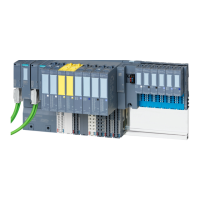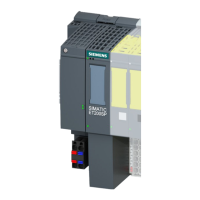Configuring
Application Module FM 458-1 DP - User Manual 4-41
A5E01078222-02 Edition 03.2009
The sampling time should be selected somewhat higher than the
bus cycle time.
The external-cyclic mode offers the advantage that the processor
hardware of two SIMOLINK rings can be synchronized to the (common)
base sampling time T0.
In the external cyclic mode (Mode 5) it might happen in the case of a
SIMOLINK transfer that, depending on the processing time and order of the
SIMOLINK blocks, actual value and setpoint values are transferred in different
scan cycles. This happens when the calculation of the blocks in scan time T1
takes longer than the SIMOLINK data transfer.
Remedy:
Place all send and receive blocks of the SIMOLINK connection at the end
of Task 1 (T1)
or
Use the SLDIS dispatcher block to configure more (imaginary) slaves
than in the SIMOLINK ring.
This moves back the time at which the sync message is generated. All
messages are read and you achieve consistent processing.
NOP
cyclic Task Tx
SYNC Telegram SYNC Telegram
cycle
cycle
cycle
Processing time of the
SIMOLINK blocks
Processing time of the
SIMOLINK blocks
Processing time of the
SIMOLINK blocks
Fig. 4-18 Cyclic automatik-mode (Mode 10)
The cyclic-automatic-mode 10 offers the advantage to place the function
block configuration in cyklic tasks, in opposed to mode 3.
The jitter-free SL-master mode, external-mode is best suited for
synchronous actual value sensing with the fastest processing (minimum
deadtime). This means, that it can be used as “virtual shaft with
dynamically changing values”, for example, for packaging machines.
In the external mode (Mode 4) the SIMOLINK cycle is synchronized to
the base sampling time T0. The SIMOLINK blocks are immediately
executed in the configured interrupt task Ix when the SYNC telegram is
subsequently received.
Fastest sensing,
synchronous

